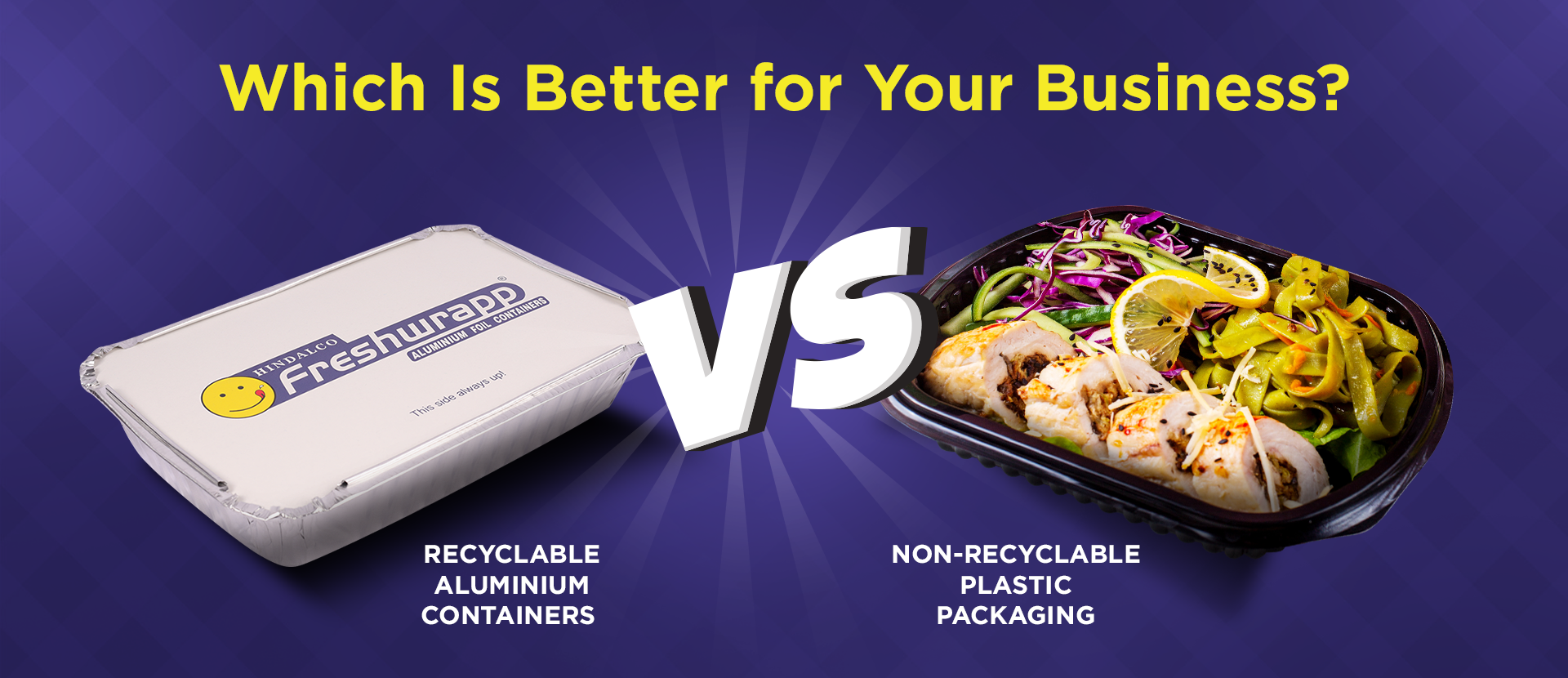
Disposable Aluminium Containers vs. Plastic Packaging: Which Is Better for Your Business?
January 17,2025
In the fast-paced world of food and hospitality businesses, packaging plays a crucial role in ensuring food remains fresh, hygienic and presentable. Whether you're running a catering service, cloud kitchen or takeaway restaurant, choosing the right packaging material can significantly impact customer satisfaction, operational efficiency, and environmental responsibility. Two of the most common options are disposable aluminium containers and plastic packaging. But which one is better for your business?
1. Food Safety and Hygiene
- Aluminium Containers: Aluminium is non-toxic, non-reactive, and can withstand high temperatures without compromising food safety. It acts as an excellent barrier against light, moisture, and contaminants, ensuring that the food remains fresh and safe.
- Plastic Packaging: While plastic containers are lightweight and versatile, not all plastic types are food-grade. Exposure to heat can sometimes cause harmful chemicals to leach into the food, especially with non-food-grade plastics.
Winner: Aluminium containers offer superior safety and hygiene benefits.
2. Heat Retention and Temperature Resistance
- Aluminium Containers: Known for their excellent heat retention, aluminium containers keep food warm for longer periods and are oven-safe, making them ideal for reheating.
- Plastic Packaging: Most plastic containers cannot withstand high temperatures and may warp or release harmful chemicals when heated.
Winner: Aluminium excels in heat retention and temperature resistance.
3. Environmental Impact
- Aluminium Containers: Aluminium is 100% recyclable without losing quality, making it one of the most sustainable packaging materials. Recycling aluminium consumes significantly less energy compared to producing new aluminium.
- Plastic Packaging: While some plastics are recyclable, a significant portion ends up in landfills or oceans due to improper disposal. Plastics also take hundreds of years to decompose.
Winner: Aluminium is more eco-friendly and recyclable.
4. Durability and Strength
- Aluminium Containers: Aluminium is sturdy, crush-resistant, and holds its shape during transport, reducing the risk of spills or leaks.
- Plastic Packaging: Plastic containers are often lightweight but prone to bending, cracking, or leaking, especially when holding hot or heavy food.
Winner: Aluminium offers better durability and spill resistance.
5. Cost Considerations
- Aluminium Containers: While slightly more expensive than plastic initially, aluminium's benefits in safety, heat retention, and recyclability often justify the cost.
- Plastic Packaging: Plastic is generally cheaper upfront, but long-term environmental and disposal costs can outweigh the savings.
Winner: Plastic may seem cost-effective short-term, but aluminium offers better long-term value.
6. Customer Perception and Branding
- Aluminium Containers: With growing awareness of sustainability and safety, customers often perceive aluminium containers as a premium, environmentally responsible choice.
- Plastic Packaging: Single-use plastics are increasingly frowned upon by eco-conscious consumers.
Winner: Aluminium aligns better with modern customer preferences and brand reputation.
Which Should You Choose?
While plastic packaging may offer initial cost benefits, aluminium containers win across critical factors such as food safety, heat retention, environmental sustainability, and overall durability. For businesses aiming to build long-term customer trust, enhance operational efficiency, and reduce their environmental footprint, aluminium packaging emerges as the clear winner.
Investing in high-quality aluminium containers, such as Hindalco Freshwrapp, ensures your business stays ahead in an increasingly competitive and eco-conscious market.
Choose aluminium packaging. Choose quality. Choose sustainability.